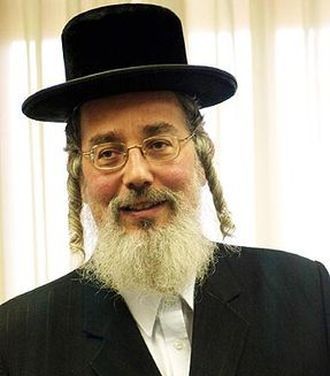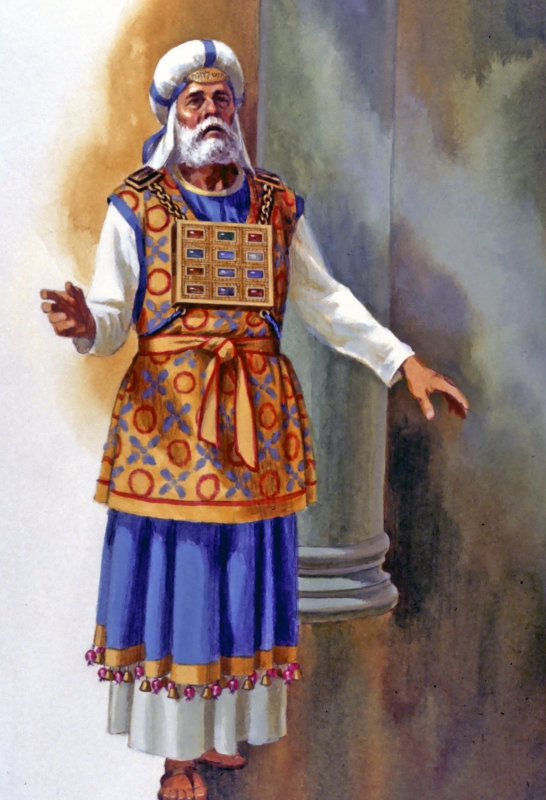Last week I was in Jerusalem. I have a guest from the USA, who wanted to see Ma'arat Hamach'pelah, the Cave of the Patriarchs, in Hebron. Although I've traveled extensively from one end of the land to the other over the years, I'd never been to Hebron for several reasons. For one thing, back when I was a student and toured with my classmates as part of our Israel year at Hebrew Union College, we were never taken over the Green Line for ideological as well as for safety reasons. Over the years, I have crossed the Green Line - the line separating Israel proper from the territories conquered in the 1967 war - on a number of occasions but always thought the trip to Hebron was particularly dangerous, not to mention supportive of an ideology I don't hold, so I never went. But since my guest wanted to see it I looked into the matter and found that, right now, it isn't especially problematic and that there are weekly tours conducted through two different organizations. One, Abraham Tours, advertises a day trip where both the Jewish and Palestinian perspectives are presented. Although this one sounded most interesting to me, there was a caveat that those with Israeli passports are not permitted. I don't yet carry an Israeli passport, but I ruled that one out on principle. If it is important to present both sides of the Hebron dispute, why would one explude Israelis from the presentation? For that reason alone, I booked with the other one, the Hebron Fund, which only gives the Jewish perspective.
The day started with a morning stop of 20 minutes at Rachel's Tomb, just outside of Bethlehem, to pray. I'd never stopped at Rachel's Tomb, although I've ridden past before in tour busses. When I did, it looked as it does in the picture to the left. That was before Intifada II, the Palestinian Reign of Terror that began in the year 2000. In fact, the spring of 2000, the last time I led an interfaith tour to Israel, was the last time I passed the tomb on the Jerusalem-Bethlehem road.

Today, this is what Rachel's Tomb looks like from the outside. The wall on the left protects pilgrims approaching the tomb, while the wall on the right protects the building enclosing the tomb itself. Much criticism comes to Israel because of the security walls she has erected to protect her citizens from terror since the start of Intifada II. I'd seen sections of the wall before, while driving down the Trans-Israel Highway (Highway 6) which for a number of KM runs along the Green Line. But this was the first time that I'd been up close to part of the wall. It makes the Jewish visitor feel as if he's in a prison, while one would think the local Arab inhabitants are looking in.

Speaking of walls, here is part of the security wall that protects those travelling on the Jerusalem to Hebron highway from snipers, missiles, and anything else launched in anger. I believe this section is just past the tunnel that goes under the Arab town of Jeit Jala. (It's a file photo; my own pictures didn't come out so clearly.) To those intent on calling the Israeli presence in the West Bank, 'apartheid,' I want to mention that the traffic on this highway was a mix of Israeli and Palestinian-tagged vehicles. Although the barriers protect the highway from violence reigning down from the hills on either side, the resulting safe corridor is for everybody's use when things are quiet.

This is Kiryat Arba, a self-contained Jewish town of some 8,000 mostly religious inhabitants, located outside Hebron. Although its residents live behind barbed wire fences and protected by the Israeli army, one doesn't have such a feeling of being closed in due to the place's size and its beautiful landscaping. To me it felt no different than any other Israeli town of its size, like a sleepy suburb with schools, children's parks, and shopping areas interspersed with tracts of apartment buildings.
 |
Map of Hebron, the light blue being 'The 20%' which
juts deep into the Palestinian city |
It is inside Hebron where most of the tension is found. There, one finds several small Jewish enclaves in the Arab city. And there, one finds the biggest arguments both for and against the Jewish presence in the West Bank. The argument for is that the Cave of the Patriarchs belongs to the Jewish heartland perhaps more than any other site, and the settlement of Jews in proximity to the Cave was continuous in history until the Arab riots of 1929. The argument against is that the city of Hebron with a population of over 200,000 is the second largest Palestinian city after Gaza City, and the largest in the Palestinian homeland known as the West Bank. How can the Palestinians form a viable state without complete sovereignty in this important city? As with so many things in the 'Twice-promised Land,' both arguments are on their face logical and reasonable, and of course therein lies the problem!
 |
A street in 'The 20%.' All the houses on both
sides of the street are Arab houses and the
two women walking are, of course, Arabs who
appear to be living quite peacefully under
Israeli security administration. Behind me, at
the top of the street is the Jewish enclave
around the ancient Jewish cemetery.
|
You may remember the Oslo Accords in 1993, which granted the Palestinians a nucleus of a hoped-for future state. Under Oslo, Israel ceded everyday control to the Palestinians in the Gaza Strip, and in Jericho to give them at least a foothold in the West Bank. In the follow-on Oslo II (1995) and Wye River Memorandum (1998), the Israelis ceded control to the Palestinians in wider swaths of territory. The latter sought to solve the problem of Hebron thusly: it split off 20 percent of Hebron to a special area where Jews were allowed to live, and where the Israeli army and police controlled the security. That didn't mean that Arabs were not also allowed to inhabit it as well, and they did in numbers considerably larger than the number of Jews in 'The 20%.' The problem is that, after the start of Intifada II in 2000, the Jews could not live safely in the face of anti-Jewish violence which was hearkened back to 1929. Faced with the choice of once again evacuating the Jews of Hebron or upping the ante, Israel chose the latter and built extensive security features to protect the less than 1,000 Jews of 'The 20%' and as a result, put barriers in the way of the everyday lives of the city's Arabs.

This has unfortunately resulted in large numbers of the Arab residents of 'The 20%' quitting the area, as witnessed by the profusion of empty houses and closed-down shops in the area. But given that the city seems to be fairly quiet recently, there has been an effort by the Palestinian Authority to convince as many as possible of these residents and shopkeepers to return. Without them, the area looks something like a war zone. One would have to be heartless to not see the tragedy in this, and hope that the Arabs can be enticed back AND that they would live in peace with their Jewish neighbors.

In the meantime, Hebron's Jews have worked hard to make their dwelling places feel more like neighborhoods, and lessen the feel of living under siege. In particular, the Avraham Avinu (Abraham, our Father) neighborhood has been the recipient of much of these efforts. Because Avraham Avinu was the site of the main Jewish enclave before 1929, repopulating it with Jews and turning it into a Jewish city-within-a-city has been an ideologically important endeavor. I was somewhat surprised, and amused to find that Avraham Avinu today is also an enclave of Chabad-Lubavich. Ubiquitous in the Jewish world, Chabad cannot seem to be escaped!

Inside the Avraham Avinu neighborhood is the Avraham Avinu synagogue, which was active until 1929 and was resurrected by those reclaiming the neighborhood. Prayers are held in the shul every day. Although we stopped in to see it long after the time for the morning prayer and before the Minchah prayer, we did take a few minutes to dance and sing to Hashem in joy as long as we there there. I mean, why waste a perfectly good opportunity??!
This Torah scroll was rescued from the fire of the 1929 riots and returned to the synagogue when it was re-opened. It is used every week. For such an old scroll, its parchment is in remarkably good condition and its writing is clear and easy to read. As an important sacred object, it is obviously lovingly cared for.

The building at the site of the Cave of the Patriarchs was erected by Herod 'the Great' and its vintage is about the same as the walls of Jerusalem that he also built. Given that, it is in remarkably good condition! Herod is not thought of as a particularly heroic figure in Jewish history, but one thing is for sure: he built for keeps! The building, and the cave it surrounds, is a site considered holy to Jews, Christians, and Muslims - all the 'Abrahamic' faiths. Unfortunately, the building has a troubled history both from the 1929 riots and from the more recent massacre of Muslim worshippers in 1994 by Bernard Goldstein, a physician who was a part of the 'Kach' (Kahane Chai) party.

Here I am standing in front of the Cave. I offer this photo as evidence that I stood in a place where the UN Security Council think I do not belong. Although as I said above, I realize that there are two sides to the Hebron question - and I would have preferred to hear the other side as well except for their exclusion - I feel much more sympathetic towards the Jewish position now, than I did in the past. Of course, that's exactly the reaction the tour is calculated to produce! Although besides my guest and me all the members of our small group were Hareidi Orthodox Jews, the tour is clearly aimed at secular (which really means 'non-Orthodox') Israelis who are really paying for the Jewish 'occupation' of Hebron with the service of their sons and daughters in the IDF to keep the Jewish residents safe. As the father of an Israeli soldier who is slated to serve his next security deployment in Gush Etzion, not inside Hebron but nearby on the way from Jerusalem, I'm exactly who they want to reach. I wish that my son and his comrades did not have to serve in such places, and I will pray for their safety every day, but now I have a better understanding of why the Jews are there.

















